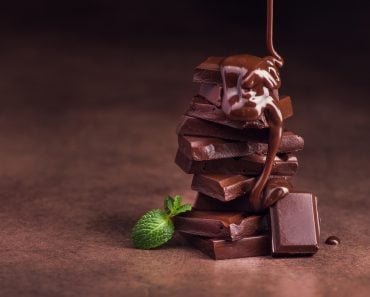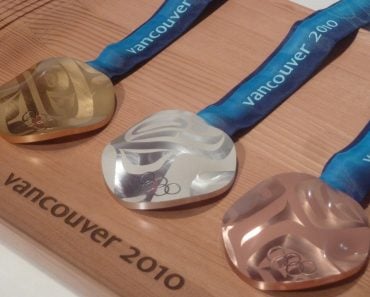Table of Contents (click to expand)
Gold and silver can both be consumed as food additives or decorations, provided they are non-ionic forms that won’t be absorbed by the body and are of a high enough quality to prevent the inclusion of impurities.
If you’ve ever sampled genuine beluga caviar, dipped strawberries in a Belgian chocolate fountain, or tasted a scotch that was older than you, then you already understand something about decadence. However, there is one culinary delight that goes above and beyond these delicacies. While most people keep their gold in vaults or wrapped firmly around their finger, there are also those gastronomic adventurers who prefer to eat their precious metals.
As in everything, where there is a demand, there is subsequently a supply, and there are a number of different ways to include 24 karat gold on the menu. The question is, how do you make gold and silver edible? And more importantly, is it safe to eat?
Recommended Video for you:
The History Of Eating Gold
Although our capitalist-crazy modern world may seem intrinsically linked to decadent behavior, there is a long tradition of consuming gold as a sign of power and wealth, dating back thousands of years to ancient Chinese, Japanese and Egyptian traditions. Gold was manipulated and consumed in ancient Rome, and then again found favor in the notoriously lavish palaces of the Renaissance. Despite not having any taste, gold leaf does add an unmissable sparkle to a dish when you want to impress your guests!

Such extravagant consumption has changed, but not disappeared, and the use of gold and silver in edible applications continues to this day. You will commonly find gold leaf adorning the outside of wedding cakes, sprinkled on artisanal desserts at Michelin Star restaurants, or as a luxurious addition to a high-end aperitif or cocktail. This material can also be used as decoration on plates and serving dishes, as well as table settings or take-home gifts, truffles and candies.

Edible precious metal comes in a number of forms, including gold flakes, crumbs, powder and gold leaf. Pounding gold into thin sheets that can easily be cut and folded is a very old and delicate practice. With modern technology, gold leaf is now light enough to be blown away in a gentle gust. The use of paintbrushes, tweezers, and razor blades is common to manipulate this material in intricate ways, without getting it stuck to your fingers! Depending on how the gold is going to be used, it can be readily purchased in its various forms, explained above
Due to the accessibility of authentic gold leaf, using this precious metal is no longer reserved for the super-elite. Provided you can handle the price tag—which is still considerable—there are many specialty restaurants and bars that feature gold or silver in their delectable offerings.In recent years, there have been dozens of designer dishes with high-quality gold accents, including gold sushi, gold burritos, gold chicken wings, gold hamburger buns, gold pizza topping and gold-glazed donuts and gold-sprinkled pasta dishes. The price tag for many of these dishes can stretch into the hundreds (or thousands!), but the experience isn’t one that you’re likely to forget.
Is Eating Gold And Silver Safe?
Aside from how cool it may feel to chomp down on some serious coin, is it safe to eat a precious metal? Obviously, many of the essential minerals that our bodies need to function can also be found on the periodic table, but you never hear about people taking “gold supplements”. Well, if you’re considering dipping your tongue into the world of golden cuisine, you can rest assured that gold is generally safe to consume.
Can You Eat Gold?
To begin with, gold is chemically inert, meaning that it will not be digested by the body and won’t interact with other chemicals and compounds in dangerous ways. Essentially, you will consume the small amount of gold, it will pass through your digestive tract and be eliminated by the body in essentially the same form it entered.
Now, when we talk about edible gold, it must adhere to a very high standard of quality to be consumed. Unlike gold jewelry, which may be mixed with a number of other metals and may contain dangerous toxins or impurities, edible gold must be between 22- and 24-karat. This typically means that the gold is at least 90% pure gold, along with 10% of another pure metal, such as silver.
Can You Eat Silver?
Silver is not quite the same as gold, because there are both ionic and non-ionic versions of this element. The non-ionic version is inactive and cannot be absorbed by the body, making it safe. However, the ionic version of silver can be digested the body, and can potentially cause toxic reactions. Therefore, it is critical that you know the source of any silver leaf, and ensure that it is of the highest possible quality.

The importance of purity for edible precious metals cannot be overstated. If you have too many impurities of other metals, such as aluminum, it can cause a dangerous buildup in the body, which can make it more difficult to absorb other essential minerals the body requires, such as calcium and zinc. In other words, you will want to spend the extra money and ensure that you are getting pure gold or silver before you start adding it to your top-shelf dishes.
A Final Word
The average person may think of eating gold in the same way as they view lighting cigars with hundred-dollar bills, but this is a novelty practice that is rapidly becoming more accessible to the masses. Decadence and its socioeconomic implications aside, enjoying a delicious dessert topped with gold flakes is a bit of a rush. So long as you only consume high-purity precious metals in moderation, you shouldn’t encounter any negative side effects from such a sumptuous treat.
References (click to expand)
- Gold – Wissensplattform nanopartikel.info. Karlsruhe Institute of Technology
- Walker H. (2001). Food and the Memory: Proceedings of the Oxford Symposium on Food and Cookery 2000. Prospect Books
- Hadrup, N., & Lam, H. R. (2014, February). Oral toxicity of silver ions, silver nanoparticles and colloidal silver – A review. Regulatory Toxicology and Pharmacology. Elsevier BV.













